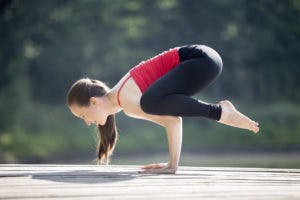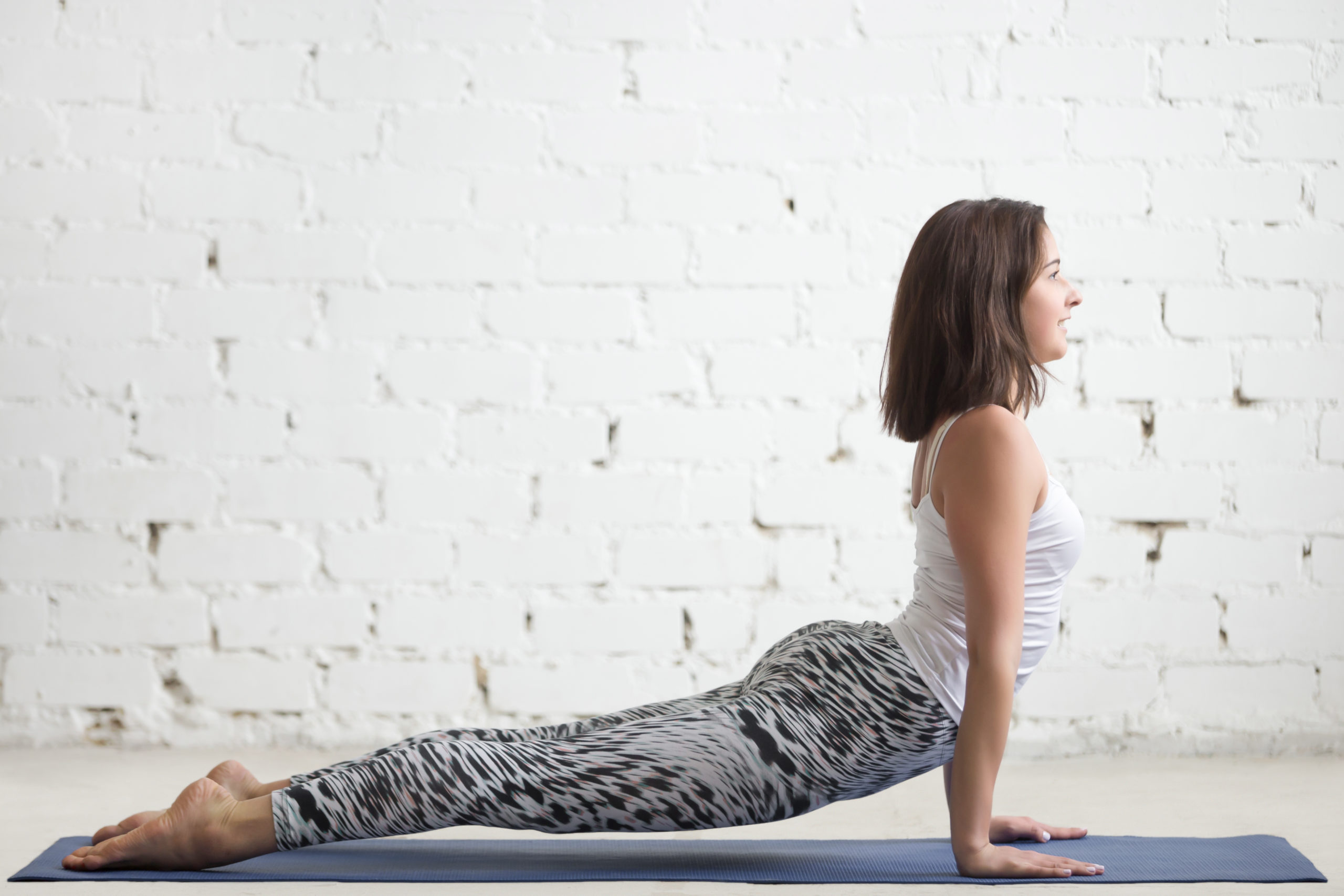Are you 1 of the nearly 2/3 of adults in the United States with shoulder pain? You may have difficulty reaching overhead, placing your hand behind your back, or lying on your side at night. The causes of your shoulder pain can range from a mild sprain or strain to a complete tear of your rotator cuff. Thankfully, there is a great chance your shoulder pain will resolve with a short period of rest and the right type of exercise.
There are many forms of exercise which can be helpful for you. Yoga is a popular choice for many people. Yoga is a great way to strengthen some of the smaller muscles around your shoulder. Strong shoulders are more resistant to injury and pain.
More about Yoga for Shoulder Pain
Yoga combines breathing techniques, meditation, and various body postures. Yoga reduces stress, depression, and anxiety. It also improves your concentration, coordination, flexibility, balance, and blood pressure. Yoga has been proven to be particularly effective in helping women recover their shoulder function following breast cancer surgery.
Many yoga postures require high activity of the shoulder stabilizing muscles. The most critical of these muscles are the middle trapezius, lower trapezius, and serratus anterior. The following 5 exercises engage and challenge these key muscles. All 5 can easily be performed in your home. They are described in order of difficulty starting with the least difficult first.

With each exercise, it is important to concentrate on your breath. This will clear your mind and relax your body.
Three-part breathing is an excellent technique to start with. During the three-part breath, you first completely fill your lungs with air, as though you are breathing into your belly, rib cage, and finally upper chest. Then you exhale completely, reversing the flow. At first, you may only be able to hold each pose for 1 breath. That is okay. As you become stronger try holding each pose for at least 3 to 5 slow breaths.
Locust Arms Back
The locust pose is an excellent way to strengthen your middle and lower trapezius. These muscles are important for your overhead function and posture.
Start by lying face down with your legs straight and your thighs touching together. Point your toes with the tops resting on the floor. Place your arms to your side with your shoulders and elbows straight. Slightly lift your hands from the floor with your palms down. Pull your shoulder blades back and slightly lift your chest. Focus your gaze slightly forward and down. Hold this posture for at least 3 to 5 slow breaths. Concentrate on each breath.
Locust Arms Forward
To increase the level of difficulty, perform the locust pose with the arms above your head. Lie face down with your legs straight and your thighs touching together. Point your toes with the tops resting on the floor. Place your arms overhead to form a “V”. Maintain your elbows straight.
Slightly lift your hands from the floor with the thumbs point up. Pull your shoulder blades back and slightly lift your chest. Focus your gaze slightly forward and down. Hold this posture for at least 3 to 5 slow breaths. Concentrate on each breath.
Upward Dog
The upward dog pose involves weight bearing through the arms and shoulders. This involves all the stabilizing muscles of the shoulder and upper back.
Lie face down with your hands in line with your chest. Point your fingers forward and support your weight on your hands. Straighten your arms. Press the tops of your feet into the mat so that your thighs elevate off the floor. Pull your shoulder blades back. Focus your gaze forward. Hold this posture for at least 3 to 5 slow breaths. Concentrate on each breath.
Side Angle
The side angle pose integrates an overhead reach with a lower body side lunge. Stand with your left heel aligned with the arch of your right foot. Your left knee will bend and track over your foot. Do not allow your knee to move past your toes. At the same time your left elbow bends and your forearm rests on your left front thigh. The right knee remains fully straight. Raise your right arm fully overhead, next to your ear. Focus your gaze forward.
Hold this posture for at least 3 to 5 slow breaths. Concentrate on each breath. With each breath try to stretch your hand further and further towards the sky. If you experience pain or are unable to fully raise your arm overhead you can try raising the arm out to your side.
Side Plank
The side plank places greater demand on the shoulder muscles because of its one-arm weight-bearing position. From a push-up position, transfer all your weight onto your right hand. Align your left shoulder on top of your right. Reach towards the ceiling with your left arm. Stack your feet on top of each other. Maintain a neutral spine. A straight line should extend from your head through your spine and down to your toes.
Focus your gaze forward. Hold this posture for at least 3 to 5 slow breaths. Concentrate on each breath. With each breath try to stretch your hand further and further towards the sky.
Contact Your Physical Therapist to Get Started with Yoga
The popularity of yoga is increasing. Unfortunately, the number of people experiencing shoulder pain is going to continue to rise. Keeping your shoulders strong and mobile is your best defense against future problems. These 5 yoga poses are great to incorporate into your workouts. We recommend performing them 2 days per week. You can cycle through each pose several times. They will probably take you no more than 30 minutes each day.
If you experience any difficulty give us a call. The doctors of physical therapy at BSR are always here to help.


